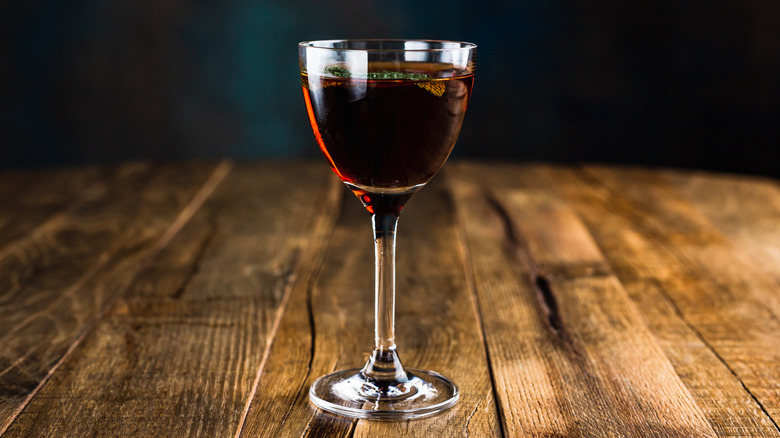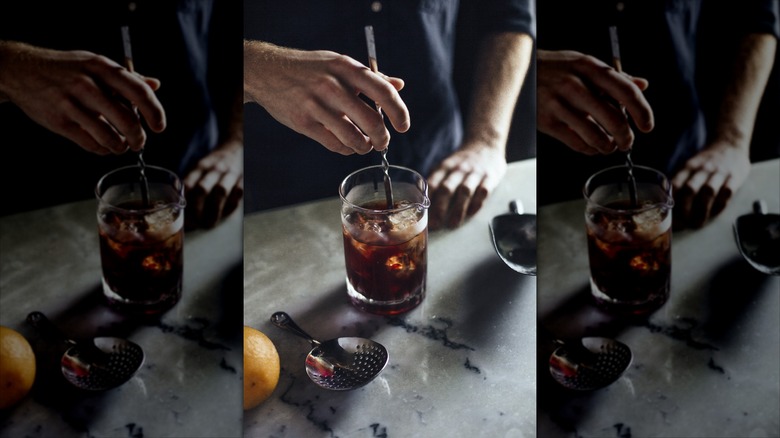How The Rapscallion Cocktail Got Its Name
While it didn't make our list of European cocktails experts say you must try once (which includes drinks like Irish coffee and Negroni sbagliato), the Rapscallion, originating in Edinburgh, Scotland, is an intriguing spin on the classic Manhattan cocktail that far too few Americans know. The cocktail gets its name from the Edinburgh bar called The Hallion where it was perfected (although the beginnings of the recipe were conceived elsewhere). Hallion is Scottish slang for "rascal" — also known as a "rapscallion".
The drink was co-developed by enterprising Edinburgh bartenders Craig Harper and Adeline Shepherd, who used the Manhattan recipe as a guide for portions but swapped out the ingredients. Upon opening their own bar, they continued to work on the Rapscallion recipe until they created the cocktail as it is known today. Thanks to the combination of whisky and Pedro Ximénez sherry (which gets its name from the type of grapes used to create the fortified wine), Rapscallions feature a smoky yet sweet flavor profile that is a true joy for discerning cocktail aficionados. The drink gets additional enhancement from pastis, a French liqueur with the flavor of anise.
Ingredients that exemplify the Rapscallion's playful name
A combination of peated whisky and single malt Scotch is vital to achieving the pleasantly smoky flavor associated with the Rapscallion. The former is made by exposing malted barley to peat smoke (peat is organic matter that's decayed over time). Single malt Scotch whisky is derived from one type of malted grain and produced at a single distillery. This provides a more consistent taste compared to blended whiskies, which can contain a mix of malt and grain whiskies as well as added flavors and other ingredients.
Balance is key to any tasty cocktail, and the pastis and sherry included in the Rapscallion recipe are perfect for offsetting the more intense flavor notes of the whisky. Pastis has a herbaceous flavor with a bite of licorice, which can be a bit strong when incorporated directly into a cocktail. That's why the creators of the Rapscallion opted to use the pastis as a rinse, which entails pouring a liquid into a cocktail glass and swirling it around to cover the inside before tipping out the excess. That way, you get the beautiful essence of pastis without being overwhelmed by it. Conversely, Pedro Ximénez sherry has a powerful sweetness, mild acidity, and a velvety mouthfeel. While the Rapscallion may not be a staple of American drinking culture, it's definitely worth trying if you love the intoxicating flavors of Manhattans.

